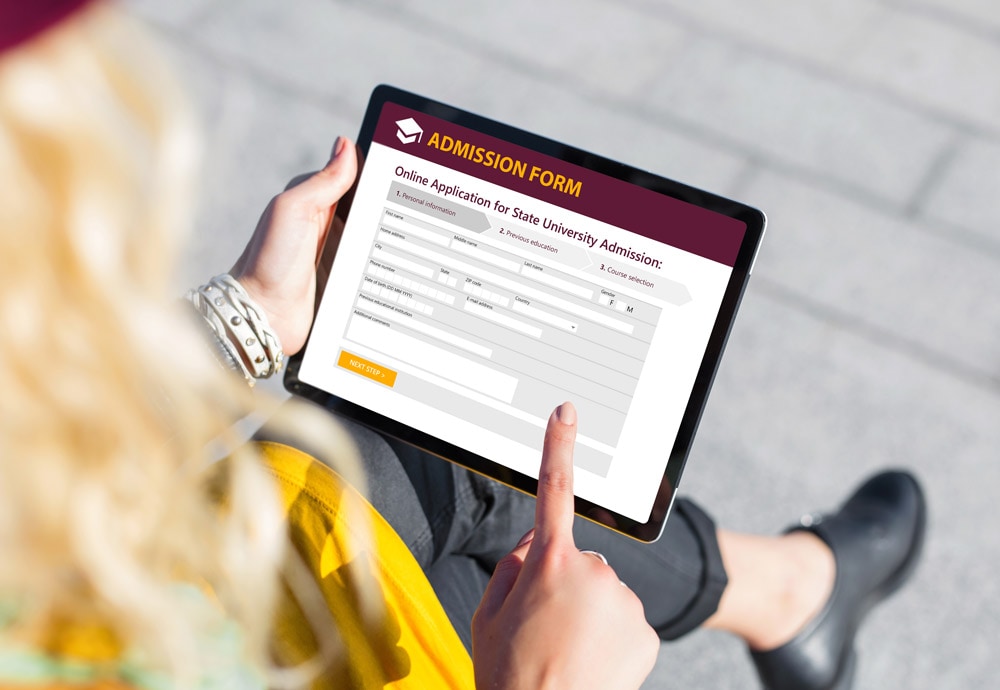10 Questions to Help You Decide on a Bachelor’s, Master’s, or Ph.D.


Congrats! You finally decided on a college and a major. But now you’re wondering how to determine what level of education you want to achieve. Will a bachelor’s degree be enough for your career and educational goals, or do you need to go on to gain a master’s or higher?
How do you know what level of education you need?
We’ve compiled 10 questions you should ask to ensure you’re making the best college decision for your schedule, budget, and future career.
1. What field do you want to go into?
Hard work will get you far no matter what degree you have, but there are some jobs you just cannot get without a certain credential.
Here’s a general guide to what jobs or fields are typical for each educational level:
Doctorate:
Higher education
Academic research
STEM research
Law
Healthcare
Master’s:
Education
Social sciences
STEM fields
Healthcare
Business/Finance
Humanities
Political science
Criminal justice
Bachelor’s:
Social sciences
STEM fields
Healthcare
Business/Finance
K-12 Education
Humanities
Political Science
2. What job do you want?
Once you know what field interests you, you should decide on a target position in that field. Many professions contain positions for varying credential levels. For example, if you decide to work in healthcare, you can be a medical assistant, technician, or nurse with an associate degree, but you must attain a doctorate if you want to be a surgeon. In cases like this, knowing what job you want will often make your degree decision for you.
Not sure what major you want? Our advisors can help you discuss your college options and get started on your general education credits. Learn more about Accelerated Pathways.
3. Does the job you want favor credentials or experience?
Some fields place a premium on the right degree, others place little emphasis on degrees at all. Certain technology fields value expertise in coding skills so highly that they may overlook the lack of credentials. Similarly, many trades don’t require a degree. Trade school may the way to go if you’re considering becoming a plumber, electrician, welder, etc.
The spectrum of academic careers leans the opposite direction: while skills matter, the credential matter more. The ladder must be climbed. Your field’s emphasis on prestige or skill will impact your choices. Should you immediately go to work to gain experience, or should you progress to the next degree level? The answer to this question depends on the demands of your line of work and how much practical knowledge you bring to the table.
4. What is the cost of your prospective degree?
Your level of education can increase your future earnings. But it’s possible that raise in pay may not be substantial enough to justify the time and money invested into the credential itself. Think about the degrees and institutions you’re considering and do a little number crunching on the total expense for each option. Compare these totals to the potential earnings from your future position. Check out our video on the Opportunity Cost of College for more information on this.
How many years will it take to break even? Make sure your expectations align with reality: even though a degree is typically worth the investment, it doesn’t always pay off right away.
5. What is the opportunity cost of your prospective degree?
Every choice in life automatically excludes something else. Your “opportunity cost” is what you lose by not choosing an option. When you think about your degree or what level of degree to choose, consider: How much money could you earn without the degree? Calculate your potential lifetime earnings if you stay at your current education level and never get the degree. Are you missing valuable work experience by spending time in school? If you didn’t choose to earn this degree, how much would those extra years of experience boost your career potential? What cost are you paying by not having that experience when you graduate?
6. Will you have to pay off student loans?
After researching your degree’s cost and benefits, dig a little deeper to find the potential amount of debt involved. How many years would it take to pay off the loan? What cost savings are available to your degree? Taking out debt for a degree is never advisable. Before you sign the dotted line, make sure you understand the full cost you’re paying by considering student loans. Want a customized college plan to help you graduate on your schedule and without student loans? Talk to an Accelerated Pathways advisor to learn how much we can help you can save on your degree.
7. What is your reason for considering the degree?
Whether you are thinking about a bachelor’s degree or a doctorate, what is your goal for that degree? Your motivation will influence not only the level of education you want, but how much time and money you’re willing to spend earning it. Are you hoping to earn a stable income? Fund another passion? Satisfy a thirst for learning? Climb the ladder in your career? Teach? Lead innovation and discovery? Consider the deep motivations and goals behind your educational choice, then ask yourself: is pursuing this degree the best way to achieve them?
8. What impact will your desired degree have on your life?
Your current season of life might make the degree decision for you—at least for a while. Do you have bills to pay, a savings account to fill, or a family to provide for? If so, you might consider waiting to pursue that next degree level or finding a program flexible enough for you to study and work simultaneously.
Take some time to figure out not only what’s most important for your future, but what’s most important for your life right now. What other life goals or responsibilities will impact when or how you earn a degree? What kind of freedom do you currently have to commit to your education? Many college freshmen are in a stage of life with fewer responsibilities than they will have 5-10 years down the road. For them, this is an excellent time to prioritize goals like education that will be more difficult to juggle later in life.
9. How much time do you want to invest in your education?
Investing in a higher level of education will take time. A lot of it. Count the cost before you sign up for classes. The average time commitment for each degree level is:
Bachelor’s = 4 years + Master’s = 2 years + Doctorate = 4-8 years
If you’re just looking to get a degree as quickly as possible to enter the workplace, an associate or bachelor’s will be the way to go. However, if you’re interested in pursuing a specific career path, you may want to some specific research on what level of degree or training is needed for that path. Our Academic Counselors can help with that!
10. What impact will your desired degree have on your life?
If it’s higher pay you’re interested in, find online estimates of the average earnings in your chosen field before enrolling in that degree program. Will a new credential actually raise your earnings sufficiently? Accelerated Pathways helps you earn a bachelor’s degree on your schedule. We give you the freedom to pursue your important life priorities while you’re still in college! Talk to us about getting started with your fully customized college plan.
Want to learn more about different levels of education? Read our blog post that breaks down the degree levels and offers suggestions.
Congratulations! You’re well on your way to figuring out what level of education is best for you! Once you’ve crunched the numbers and understand your desires for life, take a deep breath and make the plunge. And remember: numbers and pro-con lists aside, you will come out of the process with either irreplaceable work experience or an amazing credential that displays your intelligence and persistence.
Learning—in whatever form it takes—is always worth the costs, and you are a pretty cool person for taking the time to understand and carefully choose the best learning option for you. Learn more about how to earn your bachelor’s degree on your schedule and without debt at Pearson Accelerated.
read more







